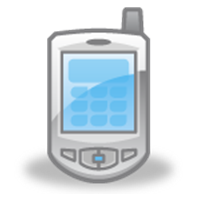

After some thorough internet research, I have
decided to choose a Web 2.0 app called Virtual Dissection.
The
app, Virtual
Dissection, helps students to visually learn about the typical frog
dissection without actually dissecting a real frog. It was developed by Punflay Incorporated.
Virtual
Dissection targets the following audience:
students from 7 to 9th grade. (12 to 15 yrs of age). The site targets this age range because it
provides interactive links to the app, animations and other links that cater to
junior high school level learning.
The
purpose of this app is to facilitate students in comprehending the various anatomical
parts of the typical bullfrog. The
dissection not only involves the frog, but requires the tools to actual dissect
the frog.
The
user interface for this tool is quite simple and is very user friendly. Steps are easily explained in a chronological
manner so students do not become easily lost.
There are also hints along the way and neat facts as the virtual
dissection is in progress.
Virtual
Dissection is available on Windows, Apple and
Linux. There are neither minimal memory
requirements nor is there installation or downloading required for this app.
Virtual
Dissection requires Adobe Flash Player (for
Microsoft users) in order to run a variety of the animations involved with the
tool. (Adobe Acrobat Plug-in 10.1.5.33.) It works with browsers such as: Google
Chrome, Internet Explorer, Safari and Mozilla Firefox.
Virtual
Dissection has the following strengths:
·
a simple user interface and is thus very
user friendly
·
constant and frequent updates with more
science material from the developer
·
it contains an abundance of interactive animations
to guide students
·
clearly states the objectives/mission of
the tool at the bottom of the page
·
pictures and notes can be easily printed
Virtual
Dissection has the following weaknesses:
·
it is NOT free; it costs anywhere from
$2.99 to $4.99. This depends on what
provider one is using.
·
advertisements appear sometimes during
parts of the dissection. This may cause
a short distraction to students.
There
are at least three ways that Virtual Dissection can be applied to
classroom teaching:
i.)
It can be used in the lab to introduce
the idea of how dissections work and can show students certain precautions
before actual dissections
ii.)
Students who may feel uncomfortable
dissecting a frog can use this at home instead.
They can learn a lot from this and is basically the same as dissecting a
real frog.
iii.)
It can be used as a quiz/test after the
real dissection has been performed by students.
It can show how much students have learned about how to dissect a frog
and to see if they learned about certain anatomical parts of the frog.
Tips - Before using Web 2.0 tools, such as Get
Body Smart, ensure the following:
·
That the tool being used does not
require excess time in order to access, such as registration or software downloading
(This could lead to loss of academic learning time if not checked beforehand
and more work for the educator.)
·
Make sure the Web 2.0 application being
used parallels with material that you want your students to understand or be
focused on (If not, sometimes these tools are either missing essential material
you want kids to know or vice versa. For example, there maybe excess material
that may be a distraction to students using Virtual Dissection; this
can take them down a wrong path that leads to confusion.
·
If students are asked to use Web 2.0
sources at home by the instructor, ensure the source is accessible to all
providers such as Microsoft and Apple.
·
Students should be asked to read about
the policies of the website in order to keep their digital learning safe and
legal

O Other comments:
This
assignment made me more aware of what it means for a digital source to be Web
2.0 material. The internet is truly a
powerful source that could lead to better instructional strategies in science
education; it could be very effective when applied strategically in the science
classroom. It does not have always be a game or videos that make student learns,
but even something such as a Web 2.0 blog could be just as impacting on student
learning.